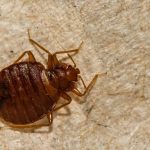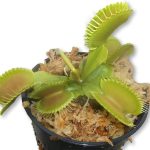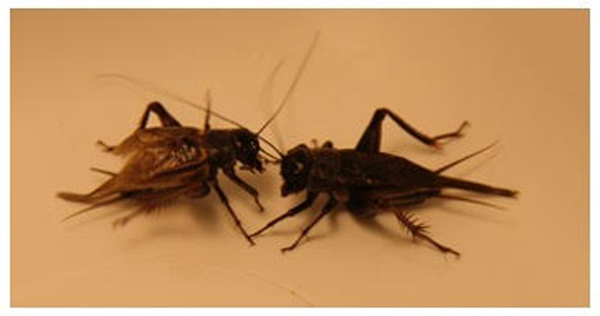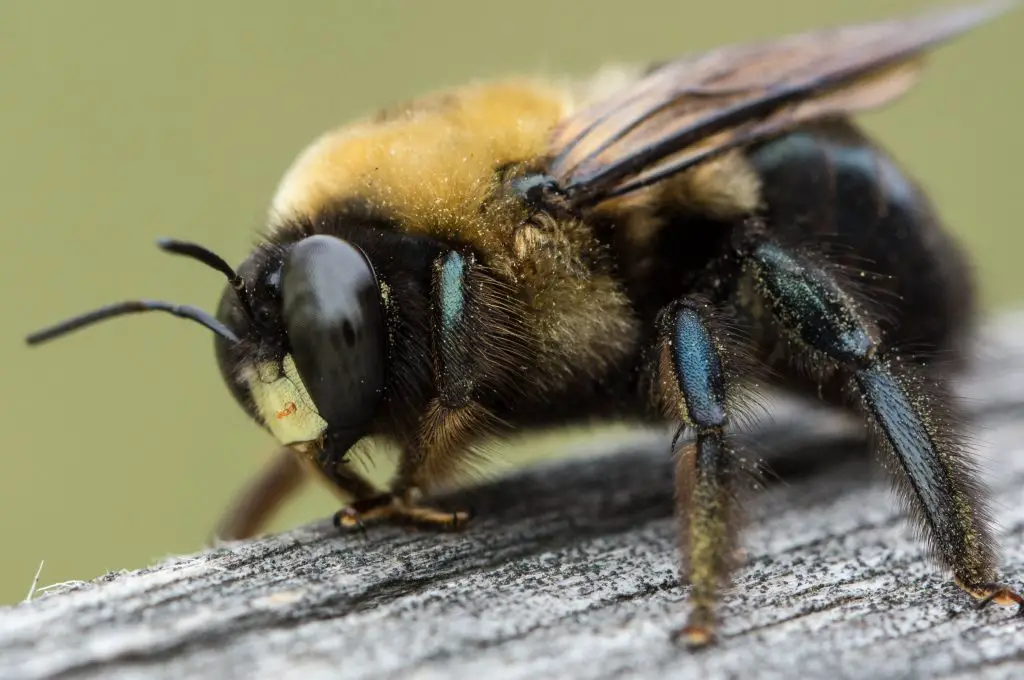What are the Benefits Of Insect Hotels For Your Garden?
Insect hotels are a great way to add more beneficial insects to your garden. By providing a place for them to stay, you can encourage these helpful critters to stick around and help pollinate your plants or eat pests.
Insect hotels can be made from a variety of materials, such as bamboo, logs, hollowed-out plant stems, or even old shoes!
If you’re feeling creative, you can even design your own insect hotel. Just make sure it has plenty of nooks and crannies for insects to hide in.
If you have a garden, chances are you’ve seen an insect hotel before. Insect hotels are structures made from a variety of materials – usually natural materials like bamboo, sticks, leaves, and wood – that provide shelter and habitat for beneficial insects.
These hotels can be as simple or as elaborate as you like, but even a basic structure can provide many benefits for your garden.
One of the most important benefits of an insect hotel is that it provides a safe place for beneficial insects to overwinter.
Many helpful insects, like ladybugs and bees, spend the winter in a state of dormancy called diapause. During diapause, these insects are very vulnerable to cold weather and need a warm place to stay alive until spring arrives.

An insect hotel gives them this safe haven and ensures that they’ll be around to help your garden next year.
Insect hotels also provide valuable habitats for other beneficial creatures like spiders, frogs, lizards, and bats.
While these animals don’t necessarily help with pollination or pest control as the insects do, they play an important role in keeping your garden healthy by eating pests and helping to control disease outbreaks.
A well-rounded wildlife population is key to having a thriving garden ecosystem! Finally, insect hotels are just plain fun!
They’re beautiful structures that add interest and intrigue to your garden landscape.
And watching all the different creatures come and go from their homes is sure to bring you hours of enjoyment.
So if you’re looking for ways to spruce up your yard and support local wildlife populations at the same time, consider building an insect hotel – your garden will thank you for it!
Insect Hotel Benefits
If you’ve ever seen an “insect hotel” while out on a nature walk or hike, you may have wondered what these structures are and what purpose they serve.
Insect hotels are essentially artificial homes for insects, providing them with a safe place to live and breed.
These hotels can be made from a variety of materials, including sticks, logs, leaves, and even recycled materials like toilet paper rolls.
While they may not look like much to us humans, bug hotels provide a valuable service to the natural ecosystem.
One of the main benefits of insect hotels is that they provide a habitat for beneficial insects like bees and ladybugs.
Bees are important pollinators of both wildflowers and crops, so by providing them with a safe place to nest and breed, we’re helping to ensure that there will be plenty of bees around to do their important work.
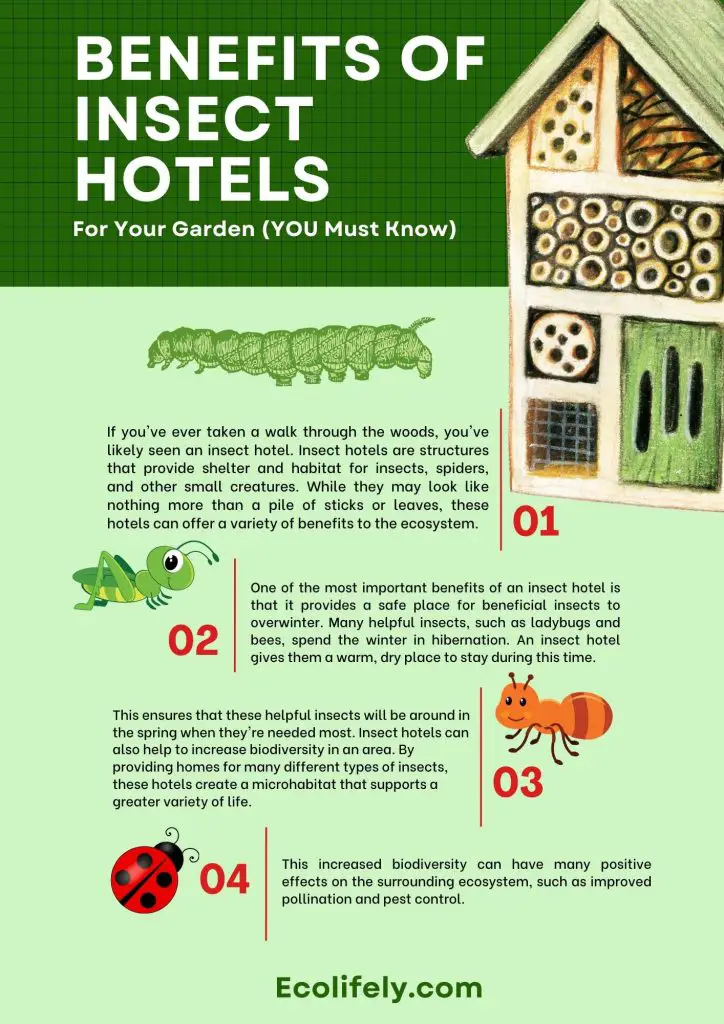
Ladybugs, meanwhile, are voracious predators of garden pests like aphids and whiteflies; by encouraging them to set up shop in your yard, you can help keep your plants healthy and free from harmful pests.
Insect hotels also provide a home for other animals like bats (which eat mosquitoes) and lizards (which eat insects).
So not only do they benefit plants and gardens directly, but indirectly as well!
The Role Of Insect Hotels In Increasing Biodiversity
Insect hotels are an excellent way to increase biodiversity within your garden or local ecosystem. These hotels provide shelter for insects that would otherwise struggle to find a suitable habitat. Here are some key points to help you understand how they can help increase biodiversity:

- Insect hotels offer a safe and secure place for insects to live, which in turn helps to boost the insect population.
- By providing a habitat for insects, you can help to attract other wildlife to your garden or local environment.
- Insects play a crucial role in the food chain, so providing a place for them to live can help to boost overall biodiversity.
The Role Of Insect Hotels In Promoting Sustainable Living
Insect hotels are gaining popularity among gardeners, environmental enthusiasts, and beekeepers. But did you know that they also promote sustainable living? Here are some ways how:

- Providing a habitat for insects: By providing shelter and protection, insect hotels encourage biodiversity in gardens and help preserve the natural balance of ecosystems. This, in turn, promotes sustainable living.
- Reducing insecticides and chemical pesticides: Insect hotels can provide a natural barrier against pests and other harmful insects. As a result, gardeners can reduce their use of chemical pesticides and insecticides, which are harmful to the environment and can impact human and animal health.
- Supporting pollinators: Insect hotels attract bees, butterflies, and other pollinators, which are necessary for the growth and reproduction of flowering plants. This contributes to sustainable agriculture and helps avoid food shortages.
Supporting Organic Farming And Reducing Pesticide Usage
Insect hotels play an important role in supporting organic farming. Here’s how:

- Encouraging natural pest control: Insect hotels can help attract beneficial insects such as ladybugs, lacewings, and hoverflies, which are natural predators of pests. This can reduce the need for chemical pesticides, making organic farming more sustainable and eco-friendly.
- Creating a balanced ecosystem: By providing a home for beneficial insects, insect hotels can help create a balanced ecosystem that is more self-sustaining. This, in turn, promotes healthy soils, which can reduce plant diseases and pests.
- Improving soil and plant health: Insect hotels can also attract pollinators such as bees, which help improve soil and plant health by increasing biodiversity.
Encouraging Eco-Tourism And Community Engagement
Insect hotels can also encourage eco-tourism and community engagement. Here’s how:

- Promoting awareness and education: Insect hotels can be used as educational tools to teach people about the importance of biodiversity and sustainable living. This promotes awareness and encourages the adoption of eco-friendly practices.
- Creating a sense of community: Insect hotels can also bring people together and promote a sense of community. They can be used as a project for schools, community groups, and businesses, bringing people together to build a sustainable and eco-friendly environment.
- Boosting eco-tourism: Insect hotels can also attract tourists who are interested in sustainable tourism. They can be used as a unique selling point for hotels, bed and breakfasts, and other accommodation providers, boosting eco-tourism in the area.

Community Engagement And Educational Benefits Of Insect Hotels
In addition to supporting the local environment, insect hotels have several community and educational benefits, such as:

- Educational opportunities: Insect hotels offer educational benefits, as they create an opportunity for people to learn about the different types of insects and their importance in the ecosystem.
- Community building: Insect hotels can help to bring together a community by encouraging people to collaborate on building and implementing insect hotels.
- Artistic features: Insect hotels serve as artistic installations that encourage people to be creative, ultimately adding something unique to the local environment.
Overall, the benefits of insect hotels are broad, and their success stories worldwide show how they can make an impactful contribution to sustainable living.
Facts About Bug Hotels
You might think that building a hotel for bugs is a silly idea, but there are actually many benefits to creating a bug hotel! Here are some facts about these unique structures:

1. Bug hotels provide homes for beneficial insects like bees, ladybugs, and butterflies.
2. By providing a place for these insects to live, you can help reduce the number of pests in your garden or yard.
3. Insects that stay in bug hotels also help pollinate flowers and plants.
4. You can build a bug hotel with recycled materials like old CDs, toothpicks, cardboard tubes, and pieces of wood.
5. Bugs hotels can be placed in gardens, near ponds or other water sources, or even on balconies or patios. So what are you waiting for? Start planning your own bug hotel today!
Is There A Difference Between Beehives and Insect Hotels?
There a few differences between beehives and insect-hotels or, in this case, a bee hotel. First, the size-of a beehive is typically much larger than a bee.
There are several differences between beehives and insect hotels. Here’s a list of those differences and the advantages of using either option.
- Bee hives are often much larger than bee hotels, as bees are much more capable of living in a beehive.
- Beekeepers build beehives as if they are large boxes.
- A bee hotel, which is often called an insect hotel or a bug hotel, is not intended for honey storage.
- There are more bees in a beehive than the total number of stars in the universe.
- Insect hotels are built to look like tiny houses and have little or no honey storage space.
- In an insect hotel, it’s not a “hotel” as in the conventional sense of the word but more like a mini-habit.
How to Attract Insects to Insect Hotel
Hummingbirds, bees, and other insects are vital to the health of our ecosystem.
They help pollinate plants and provide us with food and natural resources.
However, these populations are in decline due to a variety of factors including loss of habitat, pesticide use, and climate change.
Insect hotels provide a much-needed refuge for these hardworking creatures.
By creating a space that meets their specific needs, you can entice them to take up residence in your yard or garden.
Here are some tips on how to build an insect hotel that will make your property more attractive to these beneficial critters:
1. Use a variety of materials to create different-sized compartments. This will give insects a choice of places to stay based on their size and preferences. Some common materials include straws, pinecones, sticks, bark, leaves, and stones.
2. Make sure the hotel is well-ventilated by punching holes in the sides or using mesh screens. Proper ventilation is essential for preventing mold and mildew from developing inside the hotel.
3. Place your insect hotel in an area that gets plenty of sun during the day but is protected from wind and rain at night.

A south-facing location is ideal.
Bug And Bee Hotel
Do you have a backyard or patio that you’d like to turn into a more natural space? If so, why not consider building a bug and bee hotel?
A bug and bee hotel is basically a structure that provides shelter and nesting sites for beneficial insects like bees, beetles, and butterflies.
Not only are these creatures important pollinators, but they can also help control pests in your garden.
Best of all, creating a bug and bee hotel is a fun project that the whole family can enjoy! To get started, you’ll need to gather some materials.
You can use just about anything for your hotel – old logs, sticks, hollow reeds, straws, pinecones, etc. Get creative! Once you have your materials gathered up, start arranging them into a structure.
Keep in mind that different insects prefer different types of housing, so try to provide a variety of options.
For example, solitary bees nest in holes or tubes while social bees like honeybees live in hives made up of many individual cells. You can even add some plants like lavender or mint to attract certain insects.
Once your bug and bee hotel is complete, sit back and watch the tenants move in! Be sure to check on your hotel regularly to see what kinds of insects are using it. With any luck, you’ll soon have a thriving community of beneficial bugs living right in your own backyard!
What to Put in an Insect Hotel
If you’re looking to add some extra flair to your garden and help out some local critters at the same time, an insect hotel is a great choice!
Insect hotels provide a safe place for insects to stay and lay their eggs, away from predators. They also offer beneficial insects a place to overwinter.
You can purchase an insect hotel ready-made, or build your own using recycled materials.
Here’s what you need to know about putting together an insect hotel:
The first step is finding a suitable location for your insect hotel.
It should be in a sunny spot that’s protected from wind and rain. If you’re building your own hotel, choose materials that will withstand the elements and won’t rot easily, like cedar or bamboo.
Next, start adding components to your hotel.
Include a variety of different sizes and shapes of hollow tubes, reeds, sticks, and other natural materials. Make sure there are plenty of nooks and crannies for insects to hide in. You can also add leaves, mosses, straws, or petals for extra insulation.
Once your hotel is assembled, it’s time to invite some guests! Stand back and watch as bees, beetles, butterflies, moths , and other insects make themselves at home in your new creation.
Disadvantages of Insects
Insects are one of the most diverse groups of animals on the planet, with over a million different species!
They play important roles in many ecosystems, but can also be pests. Here are some of the disadvantages of insects:
1. Insects can carry diseases. Some insects are vectors for diseases like malaria, Zika virus, and West Nile virus. These diseases can be deadly to humans, so it’s important to avoid contact with infected insects or areas where they live.
2. Insects can damage crops. Many insect species feed on plants and can cause extensive damage to crops. This not only affects farmers and agriculture but also impacts food supplies and prices around the world.
3. Insects can be annoying! Whether it’s mosquitoes biting you in summertime or flies buzzing around your head, insects can be really annoying! Their constant presence can make it difficult to enjoy time outdoors or get a good night’s sleep.
Where is the Best Place to Put an Insect Hotel
An insect hotel, also known as a bug hotel or a nature house, is a structure made of different materials that provide shelter and nesting sites for insects.
Insect hotels can be bought or made at home, and they provide important habitat for many species of insects. There are a few things to consider when choosing the best location for your insect hotel.
First, think about the type of insects you want to attract. Different insects prefer different types of habitats, so it’s important to choose a location that will be attractive to the type of bugs you want to invite into your garden. For example, bees and other pollinators are attracted to open spaces with plenty of sunshine.
Butterflies prefer shady areas with nectar-rich flowers nearby. And ladybugs enjoy being near aphid-infested plants (aphids are one of their favorite foods!).
Once you’ve considered the needs of the insects you want to attract, take a look at your own yard or garden and identify potential locations for your insect hotel.
A sunny spot near a flower bed might be ideal for attracting bees, while a shady spot under some trees could be perfect for butterflies.
You can even put your insect hotel next to vegetables or fruits in your garden – just make sure there aren’t any pesticides nearby that could harm the beneficial bugs you’re trying to attract!
Once you’ve found the perfect location for your insect hotel, it’s time to start filling it with materials that will appeal to its future residents.
Different insects prefer different types of nesting sites, so try using a variety of materials in your hotel (straw, leaves, sticks, stones, etc.).
You can even add some holes drilled into pieces of wood – this will give solitary bees somewhere to lay their eggs. Just make sure all of the materials you use are natural and untreated (no chemicals!) so that they don’t harm the insects.
Insect hotels provide important habitats for many species of insects including bees, butterflies, and ladybugs.
When choosing The Best Place To Put An Insect Hotel there are a few things we must consider such as what kind of insects we want to attract, what these chosen kind need, and where is our yard or garden.
By providing these helpful tips we hope this makes finding The Best Place To Put Your Insect Hotel easy and effortless.
What is the Benefit of an Insect Hotel?
- If you’ve ever taken a walk through the woods, you’ve likely seen an insect hotel. Insect hotels are structures that provide shelter and habitat for insects, spiders, and other small creatures. While they may look like nothing more than a pile of sticks or leaves, these hotels can offer a variety of benefits to the ecosystem.
- One of the most important benefits of an insect hotel is that it provides a safe place for beneficial insects to overwinter. Many helpful insects, such as ladybugs and bees, spend the winter in hibernation. An insect hotel gives them a warm, dry place to stay during this time.
- This ensures that these helpful insects will be around in the spring when they’re needed most. Insect hotels can also help to increase biodiversity in an area. By providing homes for many different types of insects, these hotels create a microhabitat that supports a greater variety of life.
- This increased biodiversity can have many positive effects on the surrounding ecosystem, such as improved pollination and pest control.
Do Bugs Actually Use Bug Hotels?
If you’ve ever seen a bug hotel, also called a habitat hotel or an insect inn, you may have wondered what purpose it serves. Do bugs actually use bug hotels? The answer is yes!
Bug hotels provide shelter and homes for many different types of insects. Many people think of bugs as pests, but the truth is that most bugs are actually beneficial to our environment. They help to pollinate plants, recycle nutrients back into the soil, and control populations of other pests.
By providing a home for them, bug hotels give these helpful insects a place to live and thrive.
There are many different designs for bug hotels, but they all typically include a variety of materials like sticks, leaves, bark, stones, and hollow tubes.
These materials provide shelter and nesting sites for different types of insects.
For example, some bugs will burrow into the ground beneath the hotel while others will build nests in hollow tubes or under stones. The best way to attract specific insects to your bug hotel is to research what kinds of homes they need and then provide those conditions in your design. For example, mason bees love nesting in small holes so you could include drill holes of various sizes in your design.
Leafcutter bees prefer soft materials like leaves or feathers so including these in your hotel would be ideal.
You can also add extra features like water sources or pollen-rich flowers to attract even more insects!
Overall, bug hotels are a great way to support local wildlife and promote biodiversity in your area.
So if you’re looking for a fun project that benefits both you and the environment, consider building a bug hotel in your yard today!
Are Insect Houses Beneficial?
Yes, insect houses can be beneficial! They provide a safe place for insects to overwinter and can help increase local populations of important pollinators and other beneficial insects.
Insect houses can be made from a variety of materials, including logs, stones, straw, and even cardboard boxes.
If you’re interested in attracting specific types of insects, you can tailor your insect house to their needs.
For example, mason bees prefer smaller holes than do solitary bees. You can also add leaves or other vegetation to the inside of your insect house to provide additional shelter and food for the resident insects.
Where is the Best Place to Put an Insect Hotel?
There are a few things to consider when deciding where to place your insect hotel.
First, you’ll want to make sure the location is sunny and warm. Insects are cold-blooded creatures, so they rely on external sources of heat to regulate their body temperature.
Placing your hotel in a sunny spot will attract more insects. Secondly, you’ll want to make sure the location is safe from predators. Birds, lizards, and rodents are all known to prey on insects.
Finally, you’ll want to make sure the location is close to other sources of food and water.
Insects need both nectar and water to survive, so placing your hotel near a flower garden or water source will increase its chances of success.
Are Insect Houses Worth The Money?
Absolutely! If you’re interested in gardening at all, there are so many benefits to having a garden you should consider investing in an insect house.
When placing insect hotels in your garden, you will notice an increase in beneficial insects.
For example, if you go outside during the spring and summer and take a look at your garden, you will see many butterflies and bees buzzing around your flowering plants.
It’s natural for some insects, including predators like lacewing and ladybugs to live in your insect hotel. These beneficial insects will solve your pest problems.
It’s fun and rewarding to have some of the other critters living in your insect hotel.
Plants, trees, flowers, and vegetables will grow just fine without any pests or disease.
Once you add one of these insect-hotels to your garden, you will begin to notice a burst of life and growth.
You will never have to spend money on harmful pesticides or sprays, which is a huge plus for those of you who own pets.
In case you haven’t realized it, your garden is a huge bug hotel. These simple, low-cost wooden hotels are an amazing alternative to traditional insect hotels that are out of reach for most people.
Frequently Asked Questions Of Benefits Of Insect Hotels
What Are Insect Hotels?
Insect hotels are human-made structures designed to provide homes for beneficial insects like bees, butterflies, and ladybugs.
Why Are Insect Hotels Important?
Insect hotels can provide a range of benefits, including increased pollination, natural pest control, and biodiversity.
What Materials Are Used To Build Insect Hotels?
Insect hotels can be made from a range of materials, including logs, bamboo, and bricks. They can even be made from recycled materials such as old pallets and bricks.
Where Should Insect Hotels Be Placed?
Insect hotels should be placed in sunny spots away from strong winds. It is best to place them near plants and flowers that attract beneficial insects.
What Types Of Insects Use Insect Hotels?
Insect hotels can provide homes for a range of beneficial insects, including solitary bees, butterflies, ladybugs, and lacewings.
How Do Insect Hotels Help The Environment?
Insect hotels can help to increase biodiversity by providing homes for beneficial insects, which can help to pollinate plants and control pests naturally.
Conclusion
If you’re looking for a way to add some extra interest and biodiversity to your garden, you might want to consider building an insect hotel. Insect hotels provide a safe place for beneficial insects to overwinter or raise their young. In return, these insects will help pollinate your plants and control pests.
Plus, they’re just really cool to look at! Here are some of the benefits of insect hotels:
1. Attracts beneficial insects: By providing a place for insects to overwinter or raise their young, you can attract helpful species like bees, ladybugs, and lacewings that will pollinate your plants and eat pests.
2. Creates habitat: Insect hotels provide valuable habitats for native insects that might otherwise struggle to find a suitable home in our increasingly urbanized world.
3. Looks great: Insect hotels can be beautiful additions to your garden, with many different designs available to suit any aesthetic.
4. Easy to make: You can easily build your own insect hotel using recycled materials like wood scraps, straws, and cardboard tubes.

“My name is Leo Jacob, and I hold a Bachelor of Science degree with Honors in Applied Environmental Science and Sustainability from the University of the West of Scotland. Since childhood, I’ve been passionate about living an eco-friendly life. After completing my studies, I dedicated myself to finding simple ways to lead a more environmentally conscious lifestyle. I launched ecolifely.com to share my educational background and practical experiences with everyone, hoping to inspire others to join me in creating a greener, more sustainable world.”

